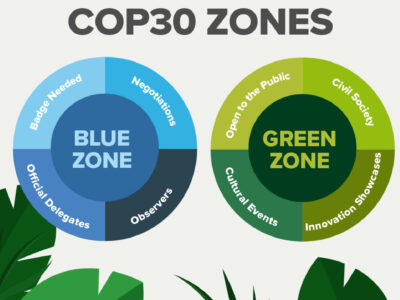A great paradox of the transition to a sustainable economy is that it will not be achieved in rural places in harmony with nature, but in cities built to exploit nature without destroying it. The problem with the idea of getting “back” to nature is that there are too many people and there is not enough nature. Fortunately, economic, technological and cultural forces are moving people out of rural areas and into urban areas. Unfortunately, some of the urban places people are moving to are not only unsustainable, but they are not fit for human habitation.
The urban migration now underway is a worldwide phenomenon that hit a critical inflection point in 2007, when for the first time in history most of the people on the planet lived in cities. The percentage of city dwellers continues to rise mainly as the result of two trends. The first is the diminishing need for human agricultural labor as the use of machines in farming continues to increase. This lack of employment in rural areas is pushing people away from these places. Second, the push out of rural areas is complemented by the pull toward cities. The images projected from the global communication system, accessible in even the most remote places in the world, are pulling people to cities. The excitement, lifestyle and sense of opportunity is proving seductive and difficult to resist.
Unfortunately, in many parts of the developing world the result is shantytowns on the edge of cities with inadequate sanitation, marginal economic opportunity and poor social services. In the developing world there are still some opportunities in manufacturing, but many workers are poorly paid and working conditions can be dangerous and oppressive. As manufacturing becomes more automated, many of these unskilled workers will no longer be needed. These trends, unaltered, hold the potential for massive political destabilization and terror. Unless people benefit from stability and have a stake in the social order, they have nothing to lose by disrupting it. FDR saw that during the Great Depression and created public works programs to address it. In the modern era, short-term job programs can help, but we must also educate and train people so they can play a long-term role in the post-industrial economy.
As bleak as all this may sound, the changing nature of work and the congregation of human population in cities provide the possibility of mass participation in the brain-based economy. The high value-added part of the economy is based on creativity, services and products that make our lives more interesting, convenient, productive and fun. Software, smartphone applications, new physical fitness routines and machines, culture, art, ideas, education, healthcare and entertainment are attracting more and more human energy, capital and activity. Production of food, clothing and shelter — the parts of the economy that once occupied most of our time and labor — are a smaller and smaller proportion of the GDP in the developed world. The key is training and education. (This is the unbiased view of a professional educator…)
But for cities to be sustainable in the brain-based economy, we must secure public investment in infrastructure, education, health care and social services. The infrastructure to support distributed generation of renewable energy, mass and personal transit, and to treat and transform water, sewage and solid waste can be built and even managed by private contractors, but must be paid for by public debt retired by a combination of taxes and user fees. This requires a public sector that is active, ethical and sophisticated and able to form productive public-private partnerships. While in America we are unlikely to see this type of investment and policy emerge from the national government any time soon, it is easy to see American cities, and even states, moving in this direction. Many are doing this right now: New York State’s investment in nanotechnology and micro-grids, New York City’s initiative to start a new technology school with Cornell and Technion on Roosevelt Island, the High Line Park, bike lanes in Portland and zero waste in San Francisco — these are a just a small sample of state and local sustainability initiatives.
I am focusing on cities because place matters. While the global economy leads to a homogenization of fashion, entertainment and aspects of culture, the human need for a sense of place and distinctiveness is countering some of these trends. What is even clearer is that in the age of Skype, FaceTime, and endless cell phone calls and texts, the brain-based economy requires the live and in-person human interaction that cities provide. Communication is expanding by electronic means, but live human interaction is still required for creative and innovative pursuits. We are, after all, biological and social creatures. We need clean air, water and food to survive, but we also need each other. In the recent film The Martian, the stranded astronaut needed to communicate with earth to get home safely, but his loneliness and desolation was as much social as it was physical.
Cities provide the dynamic, social and ever-changing environment that people thrive on. We want to be part of the center of activity, to feel that we “belong” and yet are still distinctive. It is in the world’s cities that human potential can be realized — we just need to make sure we don’t destroy the planet while we explore that potential. While our economic life allows us to pay less attention to our basic biological needs, those needs remain and cannot be met if our planet is toxic or dangerous.
We can have urban dynamism and clean air, water and food, but it requires competent sustainability management, good governance and adequate financial resources to be accomplished. Flint, Michigan’s water supply is only the most recent example of how a failure of governance can poison people. We know how to process and deliver clean water. The technology to even transform wastewater to safe drinking water exists and is available. But it is not free.
The transition to sustainable cities requires that we extend and update the basic energy, transportation, water and waste systems that made the modern city possible in the first place. We need to invest time, energy and money in creating the sustainable city. In the 20th century, such investments were an accepted part of the role of government and business. We built the electrical grid, water systems, sewers, sewage treatment, highways, parks, trains, ports, and gas lines and made countless other investments for the future. We seem to have forgotten that deferred gratification and investment are necessary. We’ve demonized government and think that all taxation leads to waste. By stripping legitimacy and capacity from government, we have achieved a self-fulfilling prophecy. If we are to build the sustainable city here in America, we must rebuild confidence in government and in our ability to act as a community willing to invest in the future.
By concentrating human population in cities, we will make it possible to preserve land for wilderness, ecosystem maintenance and agriculture. People will travel to these places and will experience nature, but only a fortunate few will live close to nature. As technology advances, and more of our human needs can be met without natural systems, it will be important to maintain the ethical value of ecosystem maintenance and love of the natural world. As more and more people spend less time in nature, there is a danger that today’s era of wanton environmental destruction could resume. It will be important that we maintain an environmental ethic to ensure that the sustainable city is an integrated element of a sustainable planet.



